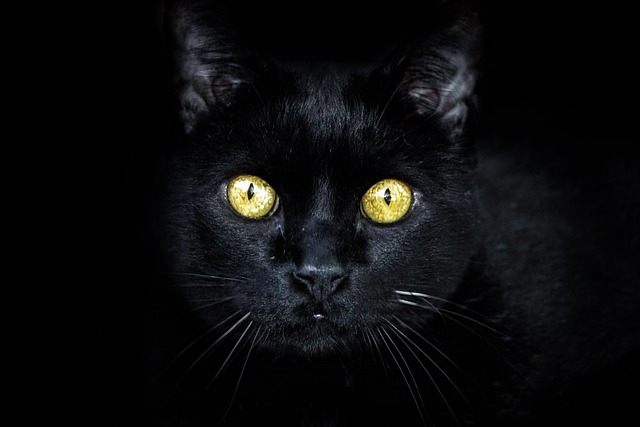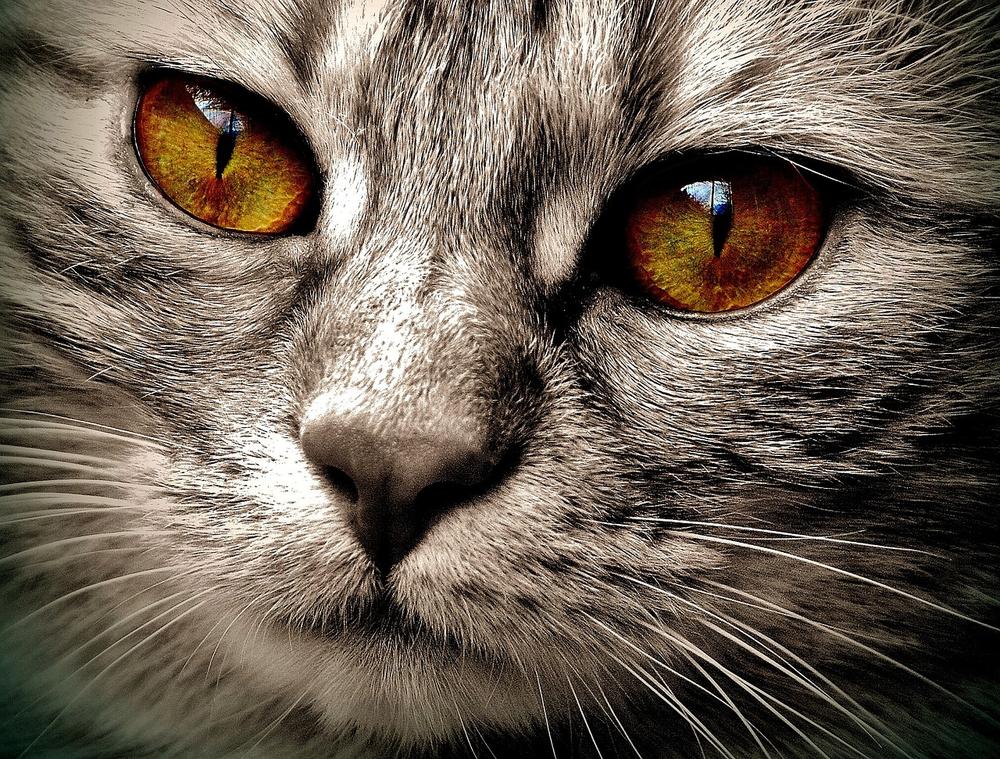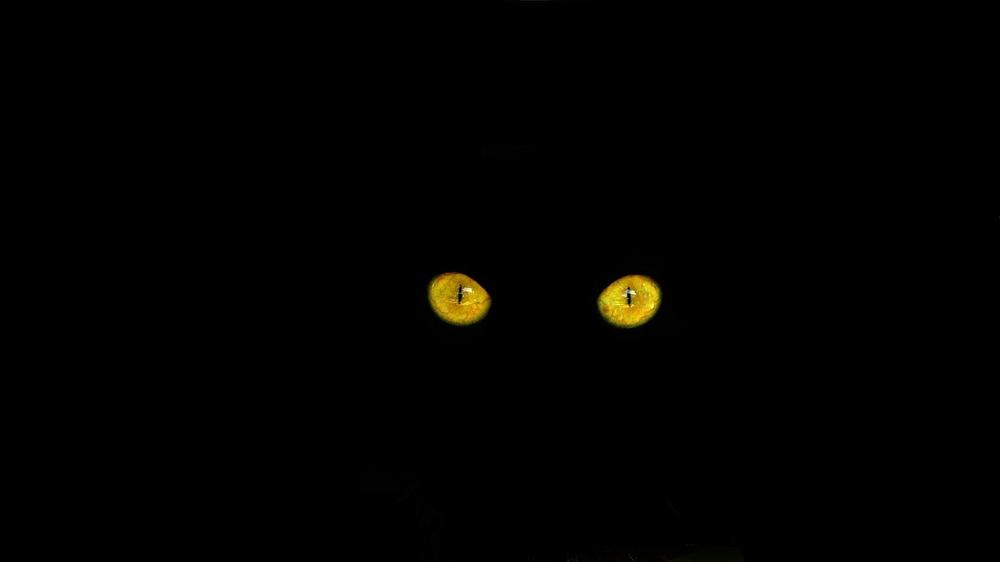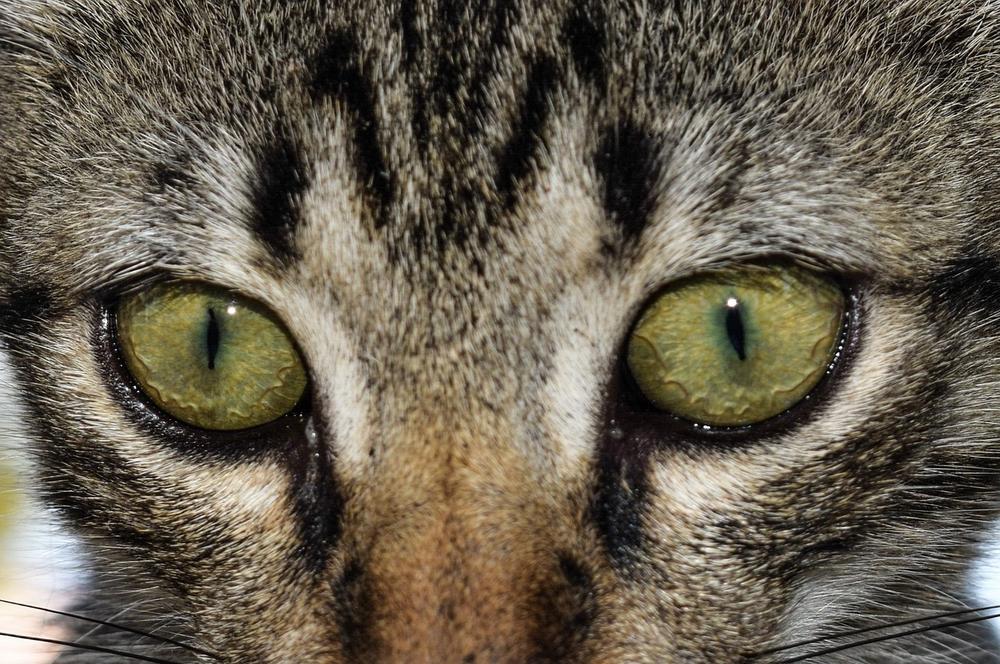Why Do Cats Eyes Glow in the Dark? (The Fascinating Answer)

Ever wondered why cats' eyes glow in the dark?
Don't fret, I feel your curiosity burning. 😊
You've probably caught yourself staring into those luminous orbs, pondering the mysteries of feline vision.
Well, today is your lucky day.
Let's unlock the secrets together, shall we?
The Mechanism of Cats' Eyes Glow in the Dark
Cats' eyes glow in the dark due to the presence of the tapetum lucidum, a specialized structure that reflects light towards the retina. This unique feature enhances their night vision, allowing them to navigate and hunt effectively in low-light environments.
Cats' eyes glow in the dark because of their special eye structure.
It's pretty fascinating, let me tell you.
Inside a cat's eye, there's this thing called the tapetum lucidum.
It's positioned and structured to reflect light towards the retina.
This helps cats see better when it's dark.
Pretty cool, right?
But wait, that's not all...
The brightness of cats' eyeshine can differ depending on factors like species, breeds, eye color, and coat color. Can you imagine the variety?.
So, next time you see a cat's eyes shining like little headlights in the dark, appreciate how unique it is.

That glow is as individual as the cat itself.
That's why cats are known for their amazing night vision.
This specific feature, the tapetum lucidum, boosts their ability to move around and hunt in areas with low light.
And hey, remember this: if you happen to be walking around at night and spot glowing eyes in the dark, don't worry. It's just a curious cat checking things out!
Main points I'll expand upon further down this article:
- Cats have a tapetum lucidum behind their retinas that reflects light.
- The tapetum lucidum is made of riboflavin and zinc.
- It amplifies light to a specific wavelength that cats can see well.
- The tapetum lucidum allows cats to see in low light conditions.
- Cats' pupils can enlarge up to 50% more than human pupils in dim light.
- The tapetum lucidum acts as a mirror and makes dark conditions appear brighter.
- Cats have slightly blurred vision due to the tapetum lucidum.
- Cats need to be closer to objects to perceive them sharply compared to humans.
- The tapetum lucidum is also found in other animals.
- Glowing eyes help cats navigate in low light environments.
But, here's something you probably didn't know about cats' eyes!
You see, it's not just their unique eye structure that allows them to glow in the dark.
Cats actually have another remarkable anatomical feature that plays a crucial role in their night vision.
Imagine having the ability to control the amount of light entering your eyes, adapting your vision to any lighting condition.
Well, cats can do just that with their impressive slit pupils!
Don't you find it fascinating how these little felines are equipped with such incredible eyes?
Let me explain further...
The Structure of Cats' Eyes
Cats, my friend, have eyes that are truly remarkable.
Let's dive into their extraordinary structure!
You see, cats have something unique - slit pupils. These sleek slits allow them to control the amount of light that enters their eyes.
It's a pretty nifty trick, don't you think?
This special adaptability is what sets our feline friends apart in any lighting situation.
Whether it's the brilliant glow of midday or the dark embrace of twilight, cats rule when it comes to visual acuity.
But hold on, there's more...
You know what enhances their air of mystery?
It's called the tapetum lucidum.
Repeat after me:

Tuh-pet-um loo-see-dum.
This fancy layer lies behind cats' retinas and has varying colors, often ranging from yellow-green to yellow-orange.
And here's an intriguing fact for you:
The brightness and color of cats' eyeshine rely on two things.
Riboflavin and zinc content in those pigment cells work together to create the captivating show we can't help but adore.
Unfortunately, small dogs and fair-coated wonders with blue eyes miss out on this magical phenomenon.
Well, my fellow cat lover craving knowledge, now you understand why cats' eyes are so enchantingly captivating.
And if you're wondering about another fascinating aspect of our feline friends, I've got just the article for you.
In my blog post on understanding the significance and behavioral cues associated with the position of a cat's whiskers, you'll delve deeper into their mysterious communication tools.
So, when you finish explore the captivating world of cats' eyes, I invite you to check out my article What Does the Position of Your Cats Whiskers Mean.
Trust me, it's a must-read for cat lovers like you, eager to unravel every secret their whiskers hold.
The Function of Tapetum Lucidum in Cats' Eyes
The tapetum lucidum in cats' eyes acts as a protective shield, intensifying available light and enhancing their sensitivity to dimly-lit environments. It allows cats to see in the dark with only 16% of the brightness humans require, while their pupils can dilate up to 50% more in dim light.
Have you ever noticed how your cat's eyes seem to glow in a dark room?
It's pretty cool, right?
Well, let me explain why it happens.
You see, cats have this special layer behind their retinas called the tapetum lucidum.
It's like a shield that helps them see in low-light conditions.
The tapetum lucidum has these cells with crystals that reflect light back into their retinas. This gives their eyes a second chance to absorb the light and makes it easier for them to see in the dark.
But there's more to it than just glowing eyes.
The tapetum lucidum serves an important purpose.
It intensifies the available light through reflection, allowing more light to enter their retinas.
And not only that, it also acts as a protective shield for our furry friends.

It filters out harmful UV rays and reduces the potential damage to their sensitive photoreceptor cells in the retina.
So, how does this magical layer actually work?
The crystals in the cells are made of riboflavin, which amplifies light to a specific wavelength that cats can see.
This enhances the sensitivity of their retinas to dimly-lit environments.
In fact, cats can see with only 16% of the brightness that humans require. They truly are masters of the dark. And to make things even more interesting, their pupils can dilate up to 50% more than human pupils in dim light.
This means even more light can enter their eyes, giving them better visibility in the dark.
Of course, there is a trade-off.
While they excel in the dark, their vision during the day may be slightly blurry due to the tapetum lucidum.
But hey, it's a small price to pay for their incredible night vision, don't you think?
But have you ever wondered how the size and proximity of the tapetum lucidum actually affect a cat's vision?
Well, let me tell you, it's fascinating!
The Relationship Between Tapetum Lucidum and Cats' Night Vision
The tapetum lucidum is a nifty little thing and plays a big role in cats' night vision.
You see, the size and proximity of this fancy layer to the retina determine how much light it can catch and bounce back.
And let me tell you, when there's not much light around, that clarity matters A LOT for cats.
But cats aren't the only ones rockin' this specialized feature.
It appears in other animals too, like predators, prey, aquatic creatures, and even those lively lemurs!

However, having a tapetum lucidum doesn't come without trade-offs, my friend.
Sure, cats can see in the dark, but their visual acuity takes a hit. When objects are lit up, they may look slightly blurry to our feline friends.
In fact, cats need to be about SEVEN times closer to an object than humans to see it clearly in bright lighting conditions.
So, thanks to their tapetum lucidum, cats get some night vision magic, but daytime sharpness?
Well, not so much.
That's just how this remarkable part of a cat's eye works!
The Role of Tapetum Lucidum in Cats' Eyes
The tapetum lucidum in cats' eyes acts as a night vision enhancer, allowing them to see six times better than humans in low-light conditions. However, the reflected light from this layer can slightly compromise image sharpness. Any changes in the glow may indicate health issues and should be checked by a veterinarian.
Cats' eyes have a magical feature called the tapetum lucidum.
Let me explain.
The tapetum lucidum is like a superhero for cats, boosting their vision.
It's basically night vision goggles built into their eyes!
When it's dark and you're searching for a flashlight, your furry friend doesn't need one.
The tapetum lucidum helps cats see better in low-light conditions, making them six times more efficient than us humans. Unfair advantage, right?
But here's the thing:
This special layer causes unabsorbed light to reflect, giving cats that eerie glow we love. So yes, cats with glowing eyes are like walking disco balls.

Although it looks cool, there's a downside.
The reflected light can make images less sharp for cats. They sacrifice some clarity to see in the dark and hunt bugs.
If you notice any changes in the glow—sudden variations in intensity or color—it could be a problem.
These changes might indicate infections, cancer, cataracts, or cornea issues.
In short, keep an eye out for abnormal shenanigans when it comes to your cat's eye glow.
By the way, injuries or vitamin deficiencies can affect the tapetum lucidum, causing a dull or absent glow.
Take care of your cat's diet and protect them from harm.
And if anything seems off with your cat's vision or appearance, contact a veterinarian for guidance.
They'll shed light on the situation.
And now, let me dive deeper into the science behind why cats' eyes glow and the factors influencing their eyeshine color...
Understanding the Reflection of Light in Cats' Eyes
Cats' eyes have a fascinating glow in the dark due to a phenomenon known as light reflection.
This is because cats possess a structure called the tapetum lucidum, acting like a mirror that reflects light back towards us. It's comparable to when you direct a flashlight at a mirror and the light bounces straight back to you.
What makes it especially intriguing is how the shape of a cat's eyes and the location of the tapetum lucidum influence the angle at which light is reflected.
Ultimately, this determines the visibility and intensity of their eyeshine.
In low-light or dimly illuminated environments, when light particles enter a cat's eye, they are either absorbed by the rods (which aid in night vision) or bounced off the tapetum lucidum. This is where the magic happens!
The majority of cats exhibit vibrant green eyeshine, which is truly captivating, wouldn't you agree?
However, here's an interesting tidbit - eyeshine can also manifest as white, blue, or even red in cute little blue-eyed and albino cats.
Whether or not you perceive the eyeshine depends on the angle at which the light enters the eye and any potential obstacles preventing the light from reaching the tapetum lucidum.
If something obstructs the light, it could indicate possible vision issues.
Moreover, the presence of zinc influences the color of the eyeshine in cats. That's why you may occasionally witness variations in glowing colors such as yellow, blue, or green.
Nature truly is mesmerizing, don't you think?
Who would have imagined that cats' eyes conceal such hidden marvels?
But here's the fascinating part...
The evolution of cats' night vision goes beyond just their ability to hunt.
It has implications that extend even further into their behavior and survival.
Want to know how?
Keep reading!
Exploring the Evolutionary Advantage of Cats' Night Vision
Cats' night vision is an evolutionary advantage that aids their hunting. Their ability to see in the dark allows them to be active during dawn and dusk, when light is low. This enhanced vision helps them spot prey and rivals, giving them an edge in survival.
Cats have developed the incredible ability to see in the dark.
And let me tell you, it's not just because they want to look cool.
This night vision of theirs is a result of their evolution over time. It gives them a big advantage when it comes to hunting.
Now, here's the thing you need to understand.
Cats are most active during dawn and dusk. And let me tell you, those hours can get pretty dark. So, it becomes quite tricky for cats to spot prey or rivals in such low-light conditions.
But here's where the magic happens.
Cats are no fools, my friend. They've adapted to this challenge by developing super eyesight.
Yep, you heard that right.
They can see better in the dark. Can you believe it?
Just imagine this scenario, it’s mind-blowing. Your little furball stealthily prowls through the night, eyes shining bright as they lock onto their target. It’s like watching scenes from a wildlife documentary.
Truly amazing stuff, isn't it?
And guess what?
Cats aren't the only ones with this special power. There are other creatures out there with glowing eyes too.
You know why?
Because they also have a strong need to see better in low-light situations.
Whether they're searching for food or trying to stay away from predators, these animals rely on their enhanced vision.
It’s incredible how evolution has shaped these animals, wouldn't you agree?
Investigating the Biological Adaptations of Cats' Eyes
Cats have these amazing eyes, my friend.
Let me share with you some fascinating facts:
- Cats have vertical pupils that give them better control over how much light goes into their eyes. It's actually a big advantage when they're hunting.
- Their eyes have more rods than cones compared to humans, so they can see really well in low light situations. But because of this, they don't see colors like we do.
- Siamese cats are missing something called tapetum lucidum, which helps reflect light in their eyes. This might affect their ability to see at night and find prey when it's dark.
- It's interesting though, because other animals also have this reflective feature in their eyes. So if you see glowing eyes in the dark, it could be a cat, a fish, or even a sheep!
And there you have it, my friend. You're now an expert on cats' eyes! 😺
And that wraps up today's article.
If you wish to read more of my useful articles, I recommend you check out some of these: Why Do Cats Like Running Water, Why Does My Cat Drink From the Toilet, Why Does My Cat Lick My Dog, Can Cats Sense Death, and Can Cats Sense Bad Weather
Talk soon,
-Sarah Davis